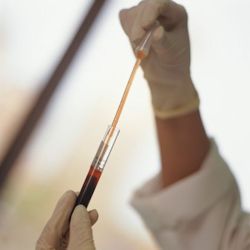Bloodborne Pathogens
Potential Hazard
Occupational exposure to blood and other potential infectious material (OPIM) puts surgical room employees at risk of infection from bloodborne pathogens while performing surgery-related tasks, including:
- Hepatitis B Virus

- Hepatitis C Virus
- Human Immunodeficiency Virus (HIV)
Possible Solutions
Among other things, OSHA's Bloodborne Pathogens Standard, 1910.1030, requires that engineering controls, work practice controls, and personal protective equipment be used to eliminate or minimize exposures to blood and OPIM.
- Engineering controls. These are devices that isolate or remove the bloodborne pathogens hazard from the workplace. They include sharps disposal containers, selfsheathing needles, and safer medical devices, such as sharps with engineered sharps-injury protection and needleless systems.
- Work practice controls. These are practices that reduce the possibility of exposure by changing the way a task is performed, such as appropriate practices for handling and disposing of contaminated sharps, handling specimens, handling laundry, and cleaning contaminated surfaces and items.
- Personal protective equipment (PPE). PPE includes gloves, gowns, eye protection, and masks. Employers must clean, repair, and replace this equipment as needed. Provision, maintenance, repair and replacement are at no cost to the worker.
Knowledge Check Choose the best answer for the question.
1-5. Which control method isolates or removes the hazard from the workplace?
You forgot to answer the question!
